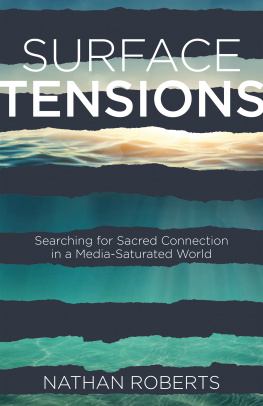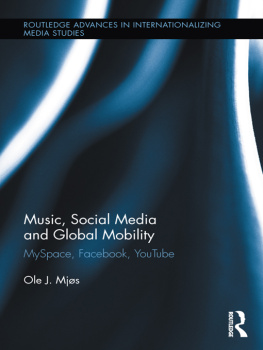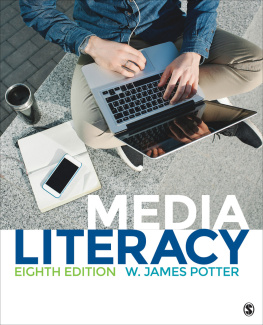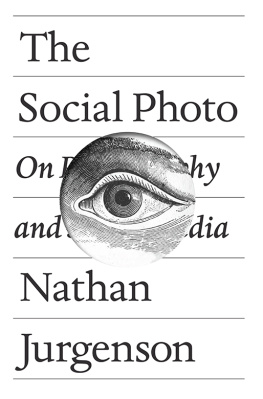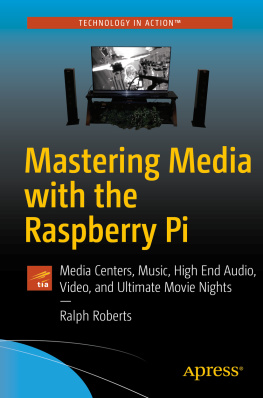Foreword
I teach the topic and write for the Internet, but I rarely like books on media. Their insights usually feel tired by the time they get to print, existing somewhere between the most obvious of epiphanies and get off my lawn grumpiness. The kids these days, with their iGoogles and their TweetFlix and their hot takestheyre getting dumber and less thoughtful, right?
Leave it to a true Millennial to set the record straight. Ive known Nate since he started his undergraduate work at NYU, and I always knew he was a smart, thoughtful guy. He read books and philosophy and stared at a lot of screens, studying movies. But I didnt realize the half of it. And I was delighted to encounter him on the pages of this book.
Surface Tensions is a wonderfully allusive name for what works equally well as a small primer on media and a memoir of growing up in a thoroughly mediated age. That means all kinds of things. My favorite media theorist, Tom de Zengotitawith whom I studied in graduate school, coincidentally also at NYUwrote a whole book on the topic, Mediated. Drawing on people like Baudrillard and Heidegger, he writes about how part of living in the twenty-first century is experiencing reality as a blunted thing, passed to us through a world thats catering to our particular whims. I didnt have to fend off a tiger or ford a river to get to work this morning. I just got on a bus, and I didnt have to stand out in the cold wondering when the bus was coming, because the transit authority in New York City has a number I can text for that information. Im writing this on a computer on which the trackpad is specifically calibrated to my touch. My Twitter feed keeps alerting me to new posts, all from people I chose to follow, people who dont annoy or frustrate me, people I find interesting. (Sometimes I forget this, assuming that reality mirrors my feed. Then I go read the comments section on any article on the Internet.)
The best example of this I know comes from a movie: Wall-E, Pixars story of a robot who got left on earth when the humans departed, their rampant consumerism having rendered the planet uninhabitable because of all the disposable crap. The movie is a true achievement in cinema (the first forty minutes or so are riveting and, essentially, silent). But its when Wall-E hitches a ride up to the space station housing all the humans that things really get interesting.
Having left the dirty reality of their apparently dying planet, the humans have constructed a reality that requires them to interact only with screens. They talk to one another through screens. They sit in hovering lounge chairs and move about the ship, sipping their meals from giant cups with straws and hitting buttons to change the color of their pajama-like clothing. Everything is soft and candy-colored, designed by a corporation for their maximum comfort. Tiny robots mill about the ship, cleaning up and making sure nobody encounters any difficulty. No standing is necessary, and so the humans muscles have atrophied, rendering them basically as blobs with (atrophying) brains.
Into this strange world comes Wall-E, a robot with rust and a personality. Early on, he bumps a human, causing her to both look at him askance and snap out of her mediated existence. She meets a personface to face, not through a screenand soon, all the humans on the ship are forced to encounter one another without all the rough edges smoothed off. That encounter with one another helps them realize how to save their race, and maybe even save their planet. All because a little robot got a bit messy and knocked them off balance.
Im not sure hell take it as a flattering comparison, but I think Nate is emulating Wall-E in these pages. Sometimes he is reflecting on the difficulty of connection, on how the devices we use connect us to (or disconnect us from) others. He does that as a digital native, a person who accepts that we cant just go live on a hill in Kentucky and pretend the outside world doesnt exist. We Christians are called to faithfully live in the world that is, a world of screens and recordings and text messages. Nates honesty, humor, and insight help us see how that might be accomplished.
But he does something else, too, which is to shake up our encounters with God, which in twenty-first century America are so often mediated through the truisms and tired clichs weve been leaning on for years, the assumptions about what it looks like to be Christian. A pastors kid is just the right person to challenge that idea. He isnt trying to reinvent the church or make faith more relevanthe just shows us an insiders perspective on growing beyond a mediated faith and into a real faith, a true encounter with God and the one Mediator, Jesus. And he thinks that can only happen as we encounter one another in real ways, whether or not devices and movies and music are involved.
Youll be encountering Nates story through another mediumthe ink and paper of a book (or perhaps the screen of your e-reader)but I hope youll sense the real presence behind these pages. Im glad hes decided to share them with us. I hope it knocks you off balance, makes you laugh, and helps you yearn for a real encounter with living presence.
Alissa Wilkinson
Critic at Large, Christianity Today
Assistant Professor of English and Humanities,
The Kings College
February 4, 2016
New York City
Introduction : Entertaining Media
Im entertained and Im uncomfortable about it. Were near the end of Gypsy, performed by an all-star cast from my charter school, Orange County High School of the Arts. Im in eighth grade, sitting next to my mom, watching a high school girl perform a striptease.
After a difficult, unsuccessful childhood on the vaudeville circuit, our timid heroine finally gets a chance to nab the spotlight and make her draconian stage mother proudat a grimy burlesque joint in Wichita, Kansas, sometime during Great Depression.

